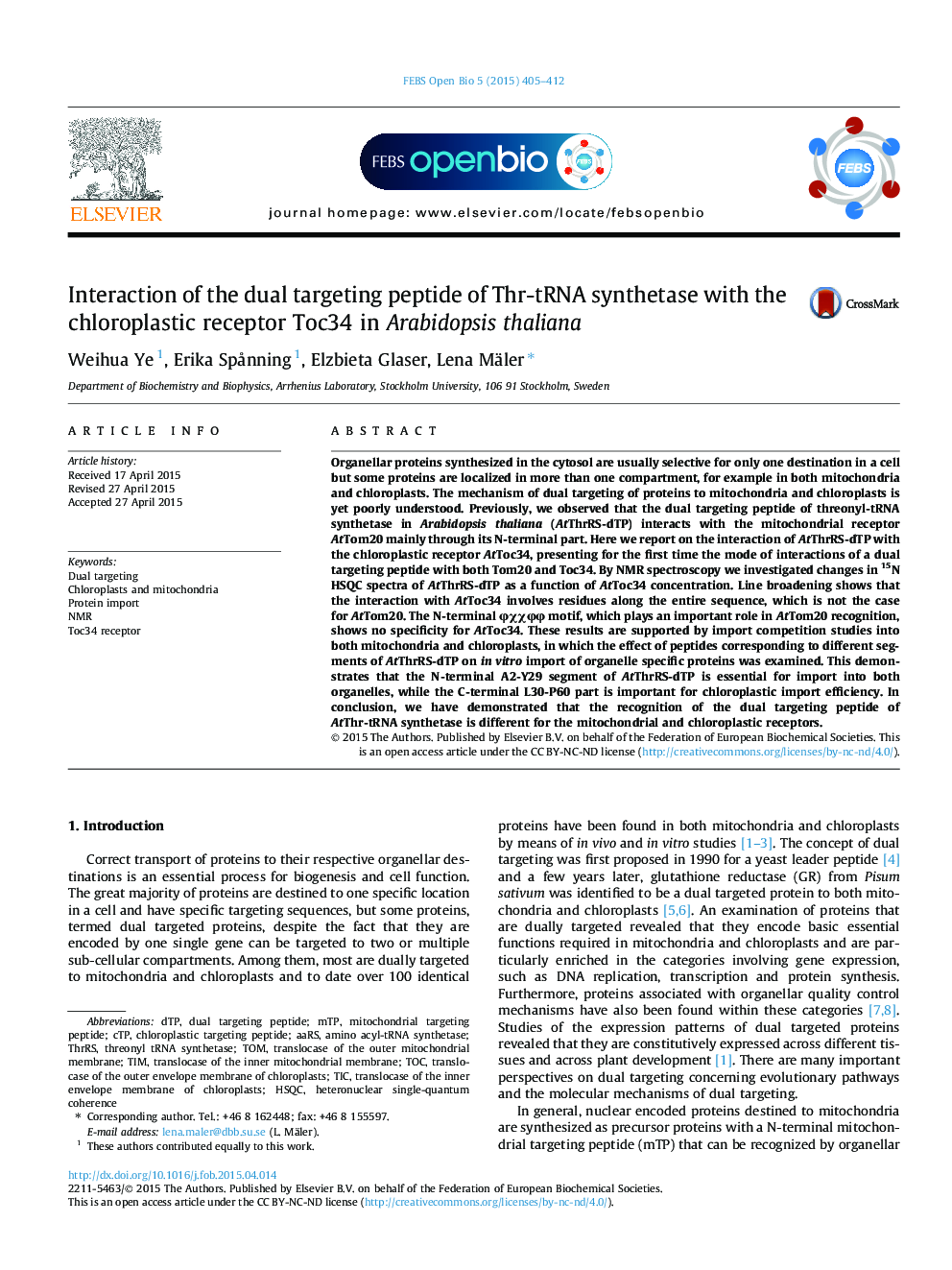| Article ID | Journal | Published Year | Pages | File Type |
|---|---|---|---|---|
| 1981600 | FEBS Open Bio | 2015 | 8 Pages |
•The mechanism of dual targeting of proteins to mitochondria and chloroplasts is poorly understood.•The interaction between a dually targeted peptide and the chloroplastic receptor Toc34 was examined.•The interaction between AtThrRS-dTP(2–60) and AtToc34 involves residues throughout the entire targeting peptide sequence.•The interaction of AtThrRS-dTP(2–60) with AtToc34 is different to the interaction with AtTom20.
Organellar proteins synthesized in the cytosol are usually selective for only one destination in a cell but some proteins are localized in more than one compartment, for example in both mitochondria and chloroplasts. The mechanism of dual targeting of proteins to mitochondria and chloroplasts is yet poorly understood. Previously, we observed that the dual targeting peptide of threonyl-tRNA synthetase in Arabidopsis thaliana (AtThrRS-dTP) interacts with the mitochondrial receptor AtTom20 mainly through its N-terminal part. Here we report on the interaction of AtThrRS-dTP with the chloroplastic receptor AtToc34, presenting for the first time the mode of interactions of a dual targeting peptide with both Tom20 and Toc34. By NMR spectroscopy we investigated changes in 15N HSQC spectra of AtThrRS-dTP as a function of AtToc34 concentration. Line broadening shows that the interaction with AtToc34 involves residues along the entire sequence, which is not the case for AtTom20. The N-terminal φχχφφ motif, which plays an important role in AtTom20 recognition, shows no specificity for AtToc34. These results are supported by import competition studies into both mitochondria and chloroplasts, in which the effect of peptides corresponding to different segments of AtThrRS-dTP on in vitro import of organelle specific proteins was examined. This demonstrates that the N-terminal A2-Y29 segment of AtThrRS-dTP is essential for import into both organelles, while the C-terminal L30-P60 part is important for chloroplastic import efficiency. In conclusion, we have demonstrated that the recognition of the dual targeting peptide of AtThr-tRNA synthetase is different for the mitochondrial and chloroplastic receptors.
Graphical abstractFigure optionsDownload full-size imageDownload as PowerPoint slide
